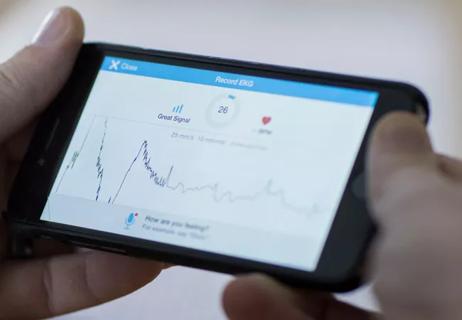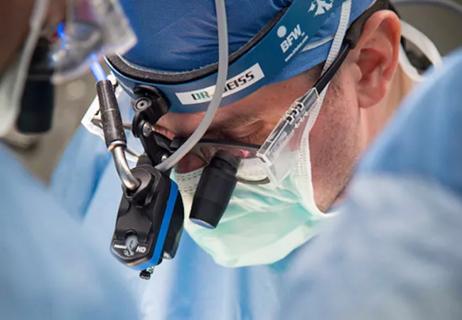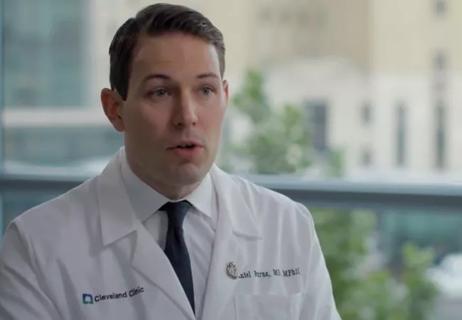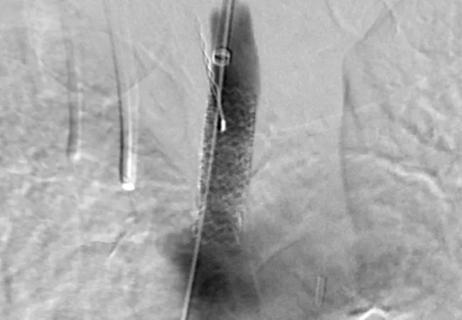Transcatheter aortic valve replacement (TAVR) has evolved so quickly that it’s easy to forget that the procedure has been commercially performed in the U.S. for less than a decade. There’s no sign the pace of advancement is slowing, so Consult QD checked in with three Cleveland Clinic TAVR experts for their quick take on what’s on the horizon in this fast-moving field. They identified three broad areas where they expect the biggest developments, as outlined below.
Advertisement
Cleveland Clinic is a non-profit academic medical center. Advertising on our site helps support our mission. We do not endorse non-Cleveland Clinic products or services. Policy
1) Expanding indications and populations
“There’s no doubt that transcatheter aortic valve replacement [TAVR] is going to expand more and more, because it’s less invasive,” says cardiac surgeon and early TAVR pioneer Lars Svensson, MD, PhD, Chair of Cleveland Clinic’s Miller Family Heart & Vascular Institute. Some 168,000 TAVR procedures are projected to be performed annually in the U.S. by 2026, he notes.
That growth is likely to stem largely from the following expanding indications, our experts say:
- Aortic stenosis in patients at low surgical risk. The multicenter PARTNER 3 trial is evaluating whether TAVR is noninferior to surgical AVR in patients at low surgical risk in addition to its established indications for aortic stenosis in patients at intermediate or high surgical risk. Enrollment is completed, and initial safety data are expected at the American College of Cardiology meeting in March 2019, says Cleveland Clinic’s Section Head of Interventional Cardiology, Samir Kapadia, MD, who’s on the PARTNER 3 steering committee. A key question will be valve durability in this large low-risk population, with follow-up continuing for approximately 10 years, notes Dr. Svensson, who is on trial’s executive committee.
- Bicuspid aortic valve stenosis. Patients with bicuspid aortic valves were excluded from the pivotal early TAVR trials, but off-label use of TAVR for bicuspid valve stenosis has mounted. Now this use is being studied in a registry within the larger PARTNER 3 trial noted above. “Patients with bicuspid valves are a sizable and generally younger population,” says Dr. Svensson, “so long-term valve durability is of particular interest.”
- Valve-in-valve TAVR. Kapadia predicts that valve-in-valve TAVR will increasingly eclipse redo AVR surgery for patients with a failed surgical bioprosthesis. “An analysis of the TVT Registry we recently published in the Journal of the American College of Cardiology showed that the outcomes of valve-in-valve TAVR are as good as, or better than, those with native valve TAVR,” he says. He adds that valve manufacturers are now designing new surgical valves to be more amenable to potential future valve-in-valve TAVR procedures. This development may nudge patients toward undergoing initial bioprosthetic valve placement at a younger age if eventual redo surgery can likely be avoided in the event of valve deterioration.
2) Continuing valve refinements
TAVR valves will continue to be refined for better performance and tailoring to specific anatomies. Our experts identified several notable TAVR devices that are in late-stage investigation or likely to be available soon:
- The Lotus™ valve is designed to be mechanically expandable to reduce the risk of paravalvular leak, notes Dr. Kapadia, who served on the steering committee of the pivotal REPRISE III trial of the device. FDA approval is expected in the first quarter of 2019.
- The self-expanding CENTERA valve has a larger orifice for the same diameter of valve, promising improved hemodynamics, says Dr. Kapadia. Cleveland Clinic is participating in the soon-to-begin EXCEED randomized trial comparing the CENTERA valve with the established Sapien 3 valve.
- Additionally, next-generation versions of current TAVR valves from Medtronic and Edwards have been developed to enable better coronary access and more reliable deployment.
3) Accessory TAVR treatments
Therapies and developments to watch in this area include:
- Anticoagulation. Early termination of the GALILEO trial in October dealt a blow to the notion that an anticoagulation strategy following TAVR may reduce thromboembolic and bleeding complications compared with standard antiplatelet therapy. The phase 3 study, in which Cleveland Clinic was a participant, was stopped when a preliminary analysis showed excess thromboembolic events, all-cause mortality and bleeding with a rivaroxaban-based anticoagulation strategy relative to a dual antiplatelet strategy. Further insight into a potential protective role for anticoagulation following TAVR is expected from the phase 3 ATLANTIS trial comparing an apixaban-based antithrombotic strategy against standard of care.
- Embolic protection. Use of the Sentinel® device for embolic protection in patients undergoing TAVR got a significant boost with the recent CMS decision green-lighting its reimbursement for Medicare beneficiaries. That’s likely to expand use of the device, says Cleveland Clinic cardiac surgeon Stephanie Mick, MD. “We’re one of the few U.S. centers that uses the embolic protection device in all TAVR patients,” she says. “This is likely to change, especially as more randomized trials assessing clinical outcomes with Sentinel are completed.” Dr. Kapadia, who served as lead investigator of the pivotal SENTINEL trial, says such investigations will launch soon.
- Strategies to promote valve durability. Various analyses are underway to examine registry data and longitudinal follow-up from pivotal TAVR trials to identify determinants of valve deterioration and how to avoid them. “We’re looking at the type of valve, how we deploy it, how we expand it, how high or low we place it, the impact of various anatomies and other variables to see how we might better promote valve durability,” explains Dr. Kapadia. One promising approach is a Cleveland Clinic-developed dry storage technology to better preserve bioprosthetic leaflets. That technology is used in the recently approved Inspiris Resilia valve for surgical AVR and is now being introduced to TAVR bioprostheses.
One constant amid the change
In the face of all these changes, Dr. Mick sees at least one constant in TAVR practice: the abiding importance of a heart team approach. “We remain very, very committed to a heart team approach for patients considering aortic valve replacement, where all subspecialty members of the team — cardiac surgeons, interventional cardiologists, cardiovascular imaging specialists and others — weigh in to advise on the best strategy for an individual patient,” she says. “I expect this type of team approach to only intensify and become more widespread.”
Photo credit: © Russell Lee








